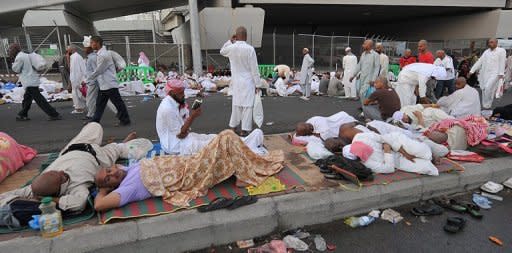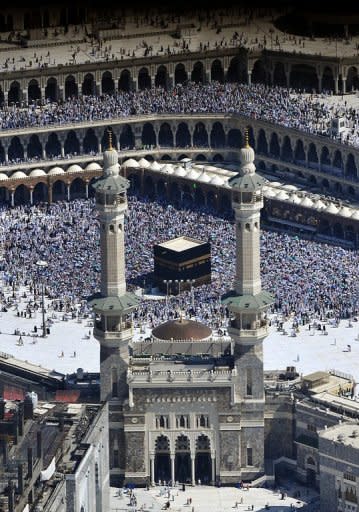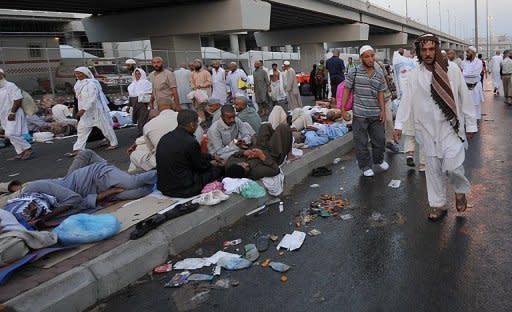Muslim pilgrims rush to complete final hajj rituals
Muslim pilgrims rushed to complete the final rituals of the annual hajj on Sunday as they thronged the devil-stoning site in Saudi Arabia's Mina valley on the penultimate day of the pilgrimage. Most pilgrims hurled stones at three pillars representing Satan as they must leave the holy city of Mina before sunset. Others, however, will stay until Monday when they will perform the ritual one last time. Mina valley, deserted throughout the year and coming to live only during the hajj, looked as if it had been hit by an earthquake, with sheets, sleeping mats and tents scattered on roads where pilgrims had been camping for days. An overwhelming stench filled the air as rubbish bags were piled high along the roadsides. "As you can see, we have suffered from the dirt," said Syrian pilgrim Ruba Mohammed, who sat squeezed with her relatives in a shady spot between two trucks. "But it was sweet suffering." Worshippers outside Mecca will have to return there to perform the farewell circumambulation of the Kaaba, the cube-shaped structure at the Grand Mosque towards which Muslims worldwide pray. The hajj officially ends on Monday but pilgrims who in a hurry to conclude their pilgrimage can do so on Sunday. "I hope I will be able to perform the hajj again in the future," said Um Hassan from Iraq. "It was a great experience." Able-bodied Muslims must perform the hajj at least once in their lifetime. "We will never experience anything better," said Rajab Ibrahim, a 42-year-old Egyptian who sat with fellow pilgrims under a colourful sheet stretched between two cars to shield them from the scorching sun. "You feel internal peace here. You forget about everything else." Though marred in the past by deadly incidents including floods, stampedes and fires, the hajj has become nearly incident-free in recent years because of multi-billion dollar projects. This year alone, the kingdom spent more than 1.1 billion riyals ($293.3 million) on development projects in the holy sites of Mina, Arafat and Muzdalifah, all outside Mecca. The devil-stoning at Mina, once the most dangerous phase of the hajj when stampedes and fires in tented camps wreaked havoc, passed without incident this year. Most tents are now fire-proof and gas canisters and cooking are banned. The stoning area has also been expanded to avoid overcrowding. Saudi authorities have built a five-level structure similar to a huge car park around the stoning site, allowing for the smooth flow of pilgrims. Mecca Governor Prince Khaled al-Faisal told reporters attendance this year was nearly four million people because of a large increase in the number of pilgrims without permits, mostly foreign residents of Saudi Arabia. The pilgrimage peaked on Mount Arafat on Thursday when Muslims camped across the vast arid plain, spending the day in prayer and reflection. On that day, Iranians performed their annual "repudiation of polytheists" rally, a ritual promoted by the late Iranian leader Ayatollah Ruhollah Khomeini to denounce the West and Israel. Participants said the rally was held inside the Iranian camp without any interference from Saudi authorities, though in the past police have confronted Iranian pilgrims for staging anti-US and anti-Israeli protests. In 1987, police efforts to quell one such demonstration sparked clashes in which 402 people died, including 275 Iranians. This year's hajj was marked by the absence of an official Syrian delegation after Damascus claimed that Saudi Arabia had barred Syrians from attending. The authorities have repeatedly denied the allegation. Most Syrian pilgrims who attended this year came from within the kingdom, many brandishing the rebels' flag as they cursed President Bashar al-Assad in their prayers. Syrian rebels and Assad's forces are locked in an all-out war since an uprising erupted against the Damascus regime in March last year.




